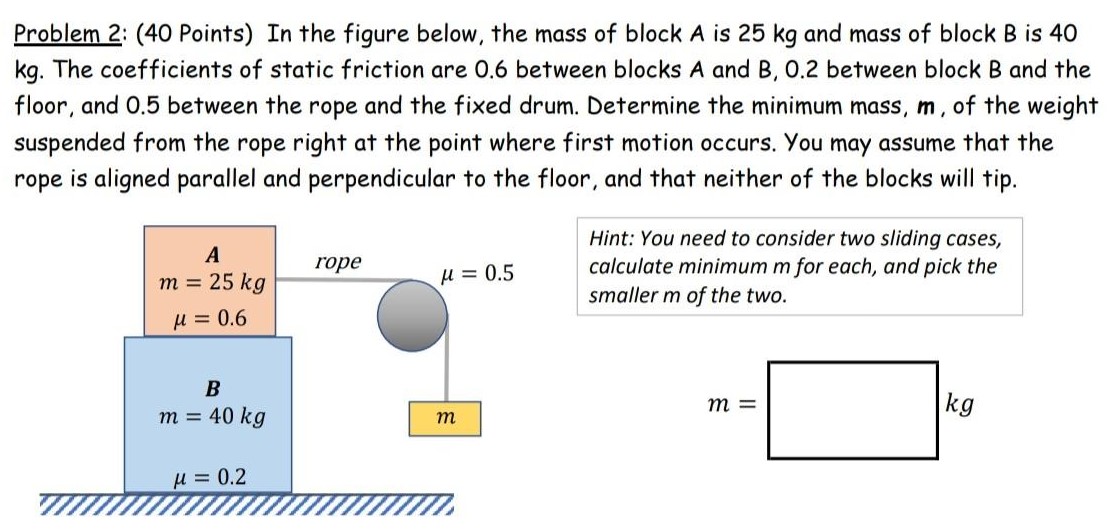In the figure below, the mass of block A is 25 kg and mass of block B is 40 kg. The coefficients of static friction are 0.6 between blocks A and B, 0.2 between block B and the floor, and 0.5 between the rope and the fixed drum. Determine the minimum mass, m, of the weight suspended from the rope right at the point where first motion occurs. You may assume that the rope is aligned parallel and perpendicular to the floor, and that neither of the blocks will tip. Hint: You need to consider two sliding cases, calculate minimum m for each, and pick the smaller m of the two.
